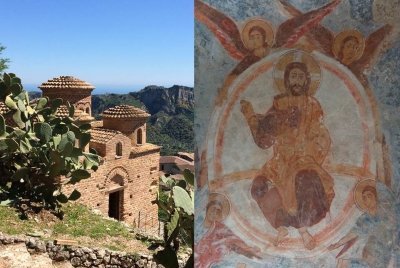Italy
Cattolica Monastery in Stilo and Basilian-Byzantin
Site Info
Official Information
- Full Name
- Cattolica Monastery in Stilo and Basilian-Byzantine complexes (ID: 1150)
- Country
- Italy
- Status
-
On tentative list 2006
Site history
History of Cattolica Monastery in Stilo and Basilian-Byzantin
- 2006: Added to Tentative List
- Added to tentative list
- Type
- Cultural
- Criteria
Links
- UNESCO
- whc.unesco.org
All Links
UNESCO.org
- whc.unesco.org — whc.unesco.org
Community Information
- Community Category
- Religious structure: Christian
- Archaeological site: Byzantine
Travel Information
Recent Connections
News
No news.
Recent Visitors
Visitors of Cattolica Monastery in Stilo and Basilian-Byzantin
Community Reviews
Show full reviewsArgo
Cattolica Monastery in Stilo and Basilian-Byzantin
Cattolica Monastery in Stilo and Basilian-Byzantin (On tentative list)

This serial tentative site is made of 7 buildings spread along Calabria peninsula. We visited 6 of them during our tour in Southern Italy in April 2017, from North (we had visited Matera before) to South. They dated back from times when Byzance was ruling this territory and are said to represent influence of Eastern monks in the area. Most of them were following Saint Basil rules, hence the name of “Basilian Byzantine” monuments.
Our first stop was in Rossano, were small San Marco church is located. The city is on top of a hill, overlooking Ionian see. The most difficult point was to park our car, then we easily found the cathedral in the middle of the old town and the Codex Purpureus museum (next door). This book (codex) is displayed in a small but recently refurbished museum and is said to be one of the oldest book in Europe, allegedly brought by monks from Syria who escaped from Muslim conquest in 7th century. This museum was a good introduction to the monuments we were about to visit. Friendly staff of the museum also gave us indications how to find the San Marco church, ten minutes walking distance from the museum and cathedral. The church is simple and very nice, just at the outskirt of the old town.
Later in the afternoon we drove to the old monastery Santa Maria del Patire. It is a long, narrow road in the mountain. There was a convenient car park, the church …
Keep reading 0 comments